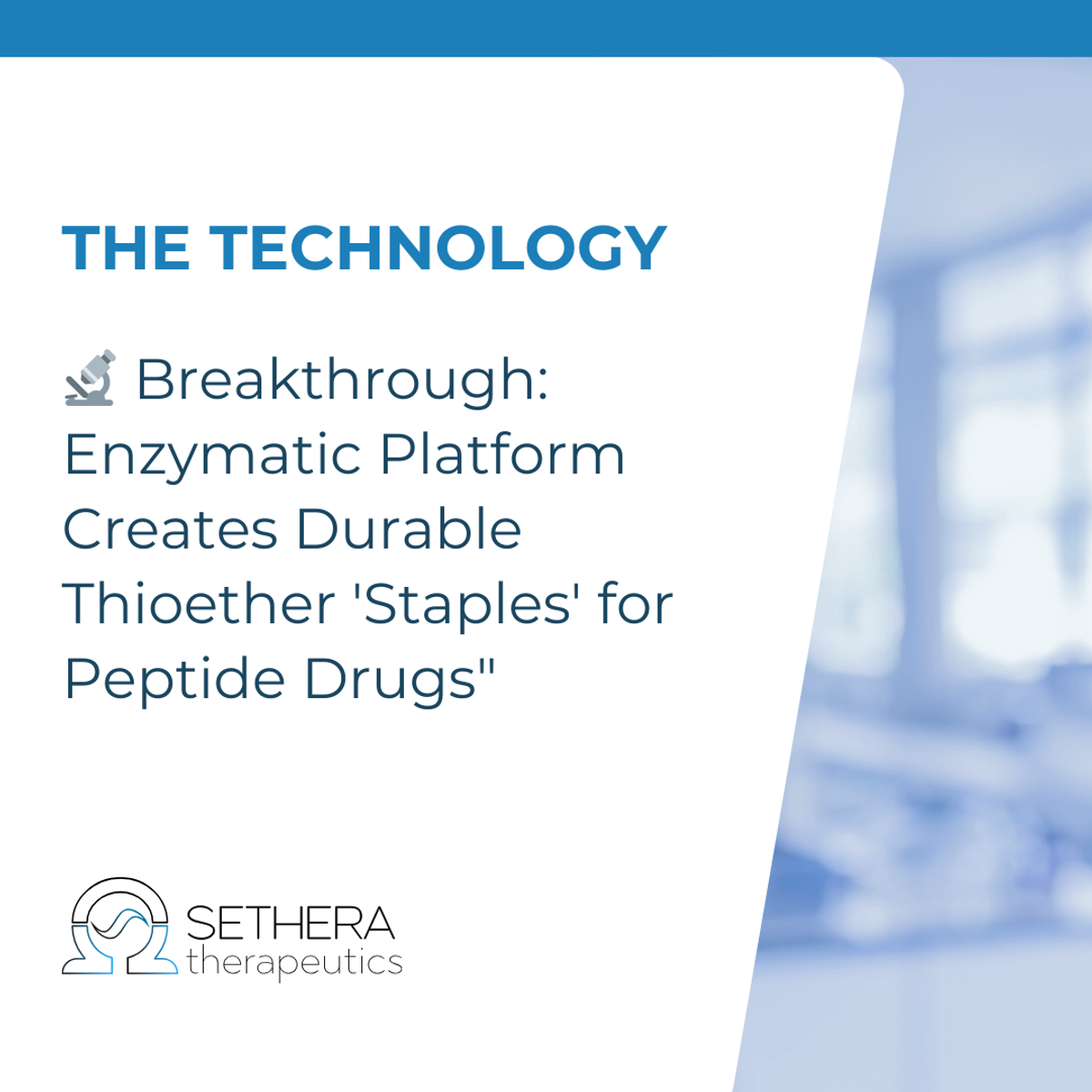FAQ: Sethera Therapeutics' Enzymatic Platform for Peptide Drug Development

Summary
What is Sethera Therapeutics’ new enzymatic platform?
It’s an enzymatic crosslinking platform that forges durable thioether ‘staples’ to lock peptides into drug-like cyclic architectures, working across a broad range of substrates including sequences built entirely from non-natural building blocks.
Why is this platform considered significant for peptide therapeutics?
The platform expands accessible chemical space, enables design of next-generation peptide therapeutics, and creates chemically robust, protease-resistant structures that improve stability and pharmacological behavior, potentially supporting oral delivery.
How does this enzymatic platform work?
The radical-based enzymatic technology acts like a precise ‘molecular stapler’ that architects new peptide structures and locks them into stable shapes with broad substrate scope and pinpoint bond placement, demonstrating controlled ‘promiscuity’.
What makes Sethera’s thioether staples superior to natural peptide bonds?
Unlike disulfide bonds found in many natural peptides, Sethera’s thioether staples are chemically robust and protease-resistant, improving stability and pharmacological behavior while potentially supporting oral delivery.
Who developed this technology and where was it published?
The technology was developed by Sethera Therapeutics in collaboration with the Department of Chemistry at the University of Utah, and the peer-reviewed results were published in the Proceedings of the National Academy of Sciences (PNAS).
What types of building blocks can this platform work with?
The platform accepts diverse peptide sequences and non-natural building blocks including D-amino acids, β-amino acids, and N-methyl residues, even enabling peptides composed entirely of non-natural components.
How does this technology compare to traditional synthetic chemistry approaches?
The platform accomplishes in a single enzymatic step what typically demands complex multi-step synthetic chemistry, demonstrating reconstruction of sophisticated macrocyclic scaffolds often used to achieve passive cell permeability.
What are the practical applications of this platform for drug development?
The platform directly connects to designing the next generation of peptide therapeutics, potentially improving treatments like GLP-1s, insulins, and natural hormones by creating more effective, stable, and deliverable peptide medicines.
Who are the key people behind this development?
Karsten Eastman, PhD (CEO and co-founder of Sethera) and Vahe Bandarian, PhD (Professor of Chemistry at University of Utah and co-founder of Sethera) are the key figures behind this development.
Where can I find more information or contact Sethera Therapeutics?
You can contact Karsten Eastman, PhD, CEO at 385-461-8528 or [email protected] for more information about Sethera Therapeutics and their enzymatic macrocyclization platform.

This story is based on an article that was registered on the blockchain. The original source content used for this article is located at Reportable
Article Control ID: 171718